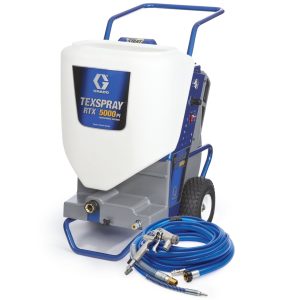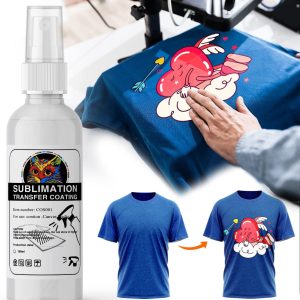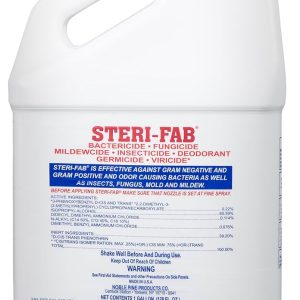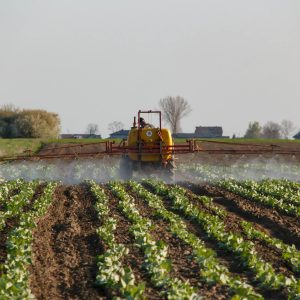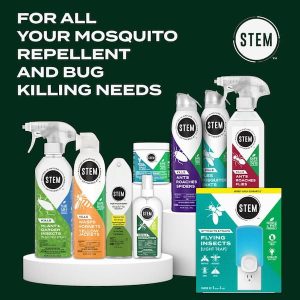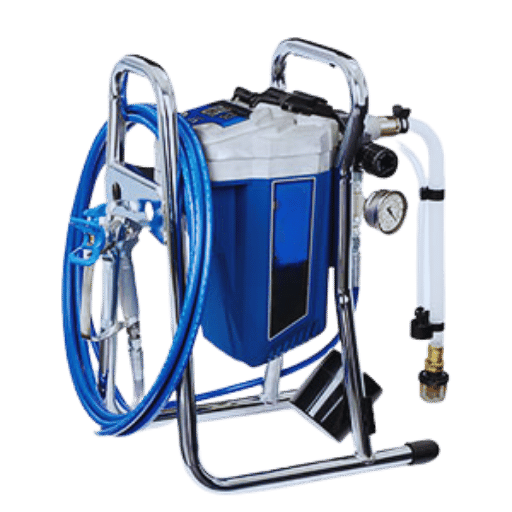
Are you looking to invest in a professional roof coating sprayer that delivers exceptional results while maximizing efficiency and minimizing material waste? Choosing the right spray equipment can make the difference between a profitable roofing project and a costly nightmare. This comprehensive analysis will help you select the ideal roof coating sprayer system that matches your specific application needs, project scale, and budget requirements.
The roofing industry has experienced significant growth, with the global roof coating market expected to reach $3.5 billion by 2027. Professional contractors increasingly rely on advanced roof coating sprayer technology to compete effectively in this expanding market. Whether you’re applying silicone coatings to commercial flat roofs, elastomeric coatings to residential structures, or specialized waterproofing membranes to industrial facilities, the right sprayer equipment directly impacts your project outcomes and profitability.
Understanding Roof Coating Sprayer Technology
Airless Roof Coating Sprayer Systems
Airless roof coating sprayers represent the industry standard for most commercial and residential applications. These systems use high-pressure pumps to force coating materials through specially designed spray tips, creating consistent coverage patterns without requiring compressed air. The technology excels in several key areas that make it particularly suitable for roofing applications.
Key Advantages of Airless Systems:
- High Production Rates: Capable of covering 2,000-4,000 square feet per hour depending on coating viscosity
- Thick Film Application: Excellent for building substantial coating thickness in single passes
- Material Versatility: Handles viscous elastomeric and silicone coatings effectively
- Wind Resistance: Less affected by outdoor conditions compared to air-assisted systems
- Cost Efficiency: Lower equipment costs and maintenance requirements
The pressure capabilities of professional airless units typically range from 3,000 to 7,000 PSI, allowing them to atomize thick, high-solids coating materials that would clog conventional spray systems. This high-pressure atomization creates uniform droplet sizes that result in consistent film thickness across large roof surfaces.
Performance Specifications for Commercial Applications:
- Flow rates: 0.5 to 2.5 gallons per minute
- Maximum hose length: 300-500 feet for large projects
- Tip sizes: 0.017″ to 0.043″ depending on coating type
- Power options: Electric (3-10 HP) or gas-powered (5-13 HP)
HVLP Roof Coating Sprayer Options
High Volume, Low Pressure (HVLP) roof coating sprayers offer superior transfer efficiency and reduced overspray for precision applications. These systems use large volumes of air at low pressure to atomize coating materials, resulting in better control and material utilization. While traditionally used for automotive and furniture finishing, modern HVLP systems have been adapted for roofing applications where precision matters most.
HVLP System Advantages:
- Transfer Efficiency: Up to 85% material transfer versus 65% for airless systems
- Superior Finish Quality: Smoother, more uniform coating appearance
- Reduced Overspray: Minimizes material waste and environmental impact
- Edge Control: Excellent for detail work around penetrations and edges
- Operator Comfort: Less bounce-back and easier handling
Applications Where HVLP Excels:
- High-end commercial buildings requiring premium appearance
- Historic restoration projects with strict material requirements
- Detail work around HVAC equipment and roof penetrations
- Small to medium-sized residential projects
- Touch-up and repair applications
Top Roof Coating Sprayer Manufacturers and Models
Graco Roof Coating Sprayer Systems
Graco stands as the industry leader in professional roof coating sprayer equipment, offering comprehensive solutions for contractors of all sizes. Their roof coating sprayers are easily customized to handle many spray-on roof coatings for residential, commercial, or industrial jobs, with models like the GMAX II 7900 providing higher output with superior control.
Graco GMAX II Series:
| Model | Output (GPM) | Pressure (PSI) | Motor (HP) | Best Applications |
|---|---|---|---|---|
| 7900 | 2.5 | 7000 | 5 | Small to medium projects |
| 10000 | 4.2 | 7000 | 10 | Large commercial work |
| 15000 | 6.3 | 7000 | 15 | Industrial applications |
The Graco 7900 model features a 3-year manufacturer warranty and has become particularly popular for roofing contractors due to its reliability and performance consistency. The unit’s compact design allows for easy transport while maintaining the power needed for demanding coating applications.
Advanced Features:
- SmartControl pressure control system maintains consistent spray patterns
- AutoPrime pump priming reduces setup time by up to 50%
- Durable DataTuff display shows real-time pressure and flow information
- Contractor-grade construction with stainless steel wetted parts
Titan Tool Roof Coating Sprayers
Titan Tool provides robust alternatives with competitive pricing and excellent performance characteristics. Their systems offer unmatched versatility and tap into the ultimate combination of power and pressure to handle any residential, commercial, or industrial job with ease.
Popular Titan Models:
- Impact 1140: Entry-level professional unit with 1.0 GPM output
- PowrTex 1200: Mid-range solution with 1.5 GPM capacity
- ControlMax 1900: Premium system with precision flow control
Titan’s Competitive Advantages:
- Value Engineering: Lower initial investment without sacrificing performance
- Modular Design: Easy field serviceability and parts replacement
- Versatile Applications: Suitable for various coating types and viscosities
- Extended Warranties: Up to 2-year coverage on select models
Wagner and Other Emerging Brands
Several manufacturers have entered the roof coating sprayer market, offering innovative solutions that challenge established players. These alternatives often provide specific advantages for niche applications or budget-conscious contractors.
Notable Alternatives:
- Wagner ProSpray: Compact systems ideal for residential work
- Tritech Industries: Heavy-duty units for industrial applications
- SprayWorks Equipment: Specialized roof and coating systems built by quality manufacturers including Graco and Titan
Roof Coating Types and Sprayer Compatibility
Silicone Roof Coatings
Silicone coatings represent the premium segment of roof coating materials, offering exceptional durability and weather resistance. These single-component systems cure through moisture reaction, creating flexible, waterproof membranes that maintain elasticity over decades of service life.
Sprayer Requirements for Silicone Coatings:
- Minimum 3,000 PSI operating pressure
- Stainless steel fluid sections to prevent corrosion
- Heated hose capability for cold weather applications
- Specialized spray tips designed for silicone viscosity (0.021″ to 0.031″)
- Material agitation to prevent settling during application
Performance Characteristics:
- Service life: 15-20 years with proper installation
- Solar reflectance: Up to 0.85 initial, 0.70 aged
- Temperature range: -65°F to 300°F continuous service
- Elongation: 200-400% at break
Elastomeric Acrylic Coatings
Elastomeric acrylic systems provide cost-effective protection with good durability and easy application characteristics. These water-based coatings offer excellent adhesion to various substrates and simplified cleanup procedures.
Application Specifications:
- Operating pressure: 2,000-4,000 PSI
- Flow rates: 1.0-2.0 GPM for optimal coverage
- Tip sizes: 0.017″ to 0.025″ for proper atomization
- Temperature limitations: Apply between 50°F and 85°F
Coverage Rates and Material Consumption:
| Coating Type | Wet Mil Thickness | Coverage per Gallon | Dry Film Thickness |
|---|---|---|---|
| Standard Acrylic | 20-25 mils | 65-80 sq ft | 10-12 mils |
| Premium Acrylic | 25-30 mils | 55-65 sq ft | 15-18 mils |
| Reinforced System | 30-40 mils | 40-50 sq ft | 20-25 mils |
Polyurethane and Specialty Coatings
Polyurethane roof coatings offer superior abrasion resistance and chemical compatibility, making them ideal for high-traffic roof areas and industrial environments. These systems require careful handling and specialized spray equipment due to their chemical reactivity.
Equipment Considerations:
- Plural component spray systems for reactive polyurethanes
- Temperature-controlled material handling
- Moisture exclusion systems
- Enhanced safety equipment for isocyanate exposure protection
Roof Coating Sprayer Selection Criteria
Project Size and Production Requirements
The scale of your typical projects fundamentally determines the appropriate roof coating sprayer specification. Understanding your production requirements helps optimize equipment selection and maximize return on investment.
Small Projects (Under 5,000 sq ft):
- Residential applications
- Small commercial buildings
- Repair and maintenance work
- Recommended capacity: 0.5-1.5 GPM
- Equipment budget: $3,000-$8,000
Medium Projects (5,000-20,000 sq ft):
- Strip mall and retail centers
- Office buildings
- Industrial facilities
- Recommended capacity: 1.5-3.0 GPM
- Equipment budget: $8,000-$15,000
Large Projects (Over 20,000 sq ft):
- Manufacturing facilities
- Distribution centers
- Hospital and school complexes
- Recommended capacity: 3.0+ GPM
- Equipment budget: $15,000-$30,000
Material Compatibility and Viscosity Handling
Different coating materials place varying demands on spray equipment. Understanding these requirements prevents equipment damage and ensures optimal application results.
Viscosity Categories:
- Low Viscosity (Under 100 centipoise): Water-based acrylics, primers
- Medium Viscosity (100-500 centipoise): Standard elastomerics, silicones
- High Viscosity (Over 500 centipoise): Thick-build systems, mastics
Temperature Effects on Viscosity: Material temperature significantly impacts sprayability. Most coatings become more viscous as temperature decreases, requiring adjustments to spray parameters or material heating systems.
Power Source and Mobility Requirements
Roof coating sprayer selection must consider job site power availability and equipment mobility needs. Each power option offers distinct advantages and limitations.
Electric-Powered Units:
- Consistent power delivery and lower operating costs
- Quieter operation for urban environments
- Requires 220V/440V electrical service
- Limited mobility without generator support
- Ideal for permanent installation or generator-equipped operations
Gas-Powered Units:
- Complete mobility and independence from electrical infrastructure
- Higher initial operating costs due to fuel consumption
- Increased noise levels may restrict use in some areas
- Regular maintenance requirements for engine systems
- Essential for remote locations and large-scale operations
Performance Optimization and Application Techniques
Spray Pattern and Coverage Optimization
Achieving consistent coverage with your roof coating sprayer requires understanding spray pattern characteristics and optimizing equipment settings for specific materials and conditions.
Spray Pattern Factors:
- Fan width: Typically 6-12 inches at 12-inch distance
- Spray angle: Usually 15-80 degrees depending on tip design
- Operating distance: 12-18 inches from substrate for optimal atomization
- Overlap percentage: 30-50% overlap between passes for uniform coverage
Pressure and Flow Relationships: Proper pressure settings ensure adequate atomization without excessive overspray. Too little pressure results in poor coverage and orange peel texture, while excessive pressure causes material waste and operator fatigue.
Optimal Pressure Settings by Material:
- Water-based acrylics: 1,800-2,500 PSI
- Solvent-based systems: 2,200-3,000 PSI
- Silicone coatings: 2,800-4,000 PSI
- High-build elastomerics: 3,200-4,500 PSI
Environmental Considerations and Weather Impacts
Weather conditions significantly affect roof coating sprayer performance and coating application success. Understanding these factors helps optimize scheduling and equipment setup.
Temperature Effects:
- Cold Weather (Below 60°F): Reduces material flow, increases viscosity, slows cure rates
- Hot Weather (Above 85°F): Accelerates skinning, reduces working time, increases solvent loss
- Optimal Range: 65-80°F for most coating systems
Wind and Humidity Impacts:
- Wind speeds above 15 mph cause overspray and uneven coverage
- High humidity (over 85%) can cause water-based coatings to foam or have extended cure times
- Low humidity (under 30%) may cause rapid solvent loss and spray tip clogging
Equipment Adjustments for Conditions:
- Use larger spray tips in cold weather to maintain flow rates
- Reduce pressure in windy conditions to minimize overspray
- Consider heated hose systems for temperature-sensitive materials
- Implement moisture control measures for reactive coatings
Maintenance and Troubleshooting
Regular maintenance ensures reliable roof coating sprayer performance and extends equipment service life. Establishing proper maintenance procedures prevents costly downtime and repairs.
Daily Maintenance Tasks:
- Inspect hoses and connections for wear or damage
- Clean spray tips and guards to prevent clogging
- Check fluid levels and top off as needed
- Test pressure controls and safety systems
Weekly Maintenance Requirements:
- Change hydraulic filters and inspect for contamination
- Lubricate pump components per manufacturer specifications
- Clean intake strainer and check for debris accumulation
- Inspect electrical connections and motor operation
Common Troubleshooting Issues:
| Problem | Probable Cause | Solution |
|---|---|---|
| Low Pressure | Worn packings, clogged filters | Replace seals, clean filters |
| Uneven Spray | Damaged tip, incorrect pressure | Replace tip, adjust pressure |
| Pump Cavitation | Restricted intake, low material level | Clear restrictions, refill tank |
| Motor Overheating | Blocked cooling, overload conditions | Clean cooling fins, reduce load |
Cost Analysis and Return on Investment
Equipment Investment Considerations
Purchasing a professional roof coating sprayer represents a significant capital investment that requires careful financial analysis. Understanding the total cost of ownership helps make informed decisions that support long-term profitability.
Initial Equipment Costs:
- Entry-level units: $3,000-$6,000
- Professional systems: $8,000-$15,000
- Commercial-grade equipment: $15,000-$30,000
- Specialty/high-output units: $30,000+
Additional Required Equipment:
- Hoses and whips: $500-$2,000
- Spray guns and tips: $300-$800
- Material pumps and agitators: $1,000-$3,000
- Safety equipment: $500-$1,500
Operating Cost Analysis
Material Efficiency Improvements: Professional roof coating sprayers significantly reduce material waste compared to roller or brush application methods. This efficiency improvement often justifies equipment investment within the first major project.
Application Method Comparison:
| Method | Material Efficiency | Labor Hours per 1,000 sq ft | Total Cost per sq ft |
|---|---|---|---|
| Brush/Roller | 75% | 8-12 hours | $0.85-$1.20 |
| Basic Sprayer | 85% | 3-5 hours | $0.65-$0.90 |
| Professional Sprayer | 90%+ | 2-3 hours | $0.45-$0.70 |
Productivity and Profit Impact
Labor Efficiency Gains: Professional spray equipment typically reduces application time by 60-75% compared to traditional methods. This productivity improvement allows contractors to complete more projects and increase annual revenue.
Quality and Warranty Benefits: Consistent application thickness and coverage achieved with proper roof coating sprayer equipment reduces callbacks and warranty claims. This reliability enhancement protects profit margins and builds customer relationships.
Case Study – Regional Roofing Contractor: A mid-sized roofing company invested $25,000 in professional spray equipment and documented the following improvements:
- 40% reduction in application time
- 25% decrease in material costs due to reduced waste
- 60% increase in project capacity
- 15% improvement in profit margins
- Equipment payback period: 14 months
Safety and Regulatory Compliance
Personal Protective Equipment Requirements
Operating a roof coating sprayer requires comprehensive safety measures to protect workers from material exposure, equipment hazards, and environmental conditions.
Essential PPE Components:
- Respiratory Protection: Supplied-air systems for isocyanate-containing materials
- Eye Protection: Chemical-resistant goggles with indirect ventilation
- Skin Protection: Chemical-resistant suits and gloves rated for specific materials
- Hearing Protection: Required for gas-powered equipment operation
Environmental and Regulatory Considerations
VOC Compliance: Many regions regulate volatile organic compound emissions from coating applications. Understanding local requirements helps select compliant materials and application methods.
Waste Management: Proper disposal of overspray, cleaning solvents, and equipment maintenance waste requires compliance with hazardous waste regulations. Implementing proper waste management procedures protects both environment and business operations.
Advanced Technologies and Future Trends
Smart Controls and Monitoring Systems
Modern roof coating sprayer equipment increasingly incorporates digital controls and monitoring systems that optimize performance and document application parameters.
Technology Features:
- Real-time pressure and flow monitoring
- GPS tracking for coverage documentation
- Material temperature control systems
- Remote diagnostics and troubleshooting capability
Sustainability and Environmental Impact
The roofing industry continues developing more sustainable coating materials and application methods. These advances influence equipment design and selection criteria.
Emerging Trends:
- Water-based formulations requiring specialized spray equipment
- Bio-based coating materials with unique handling requirements
- Energy-efficient spray systems reducing power consumption
- Recycling systems for overspray recovery and reuse
Frequently Asked Questions
What type of roof coating sprayer works best for silicone coatings?
Airless roof coating sprayers with stainless steel fluid sections work best for silicone applications. The high viscosity of silicone coatings requires minimum 3,000 PSI operating pressure and specialized spray tips (0.021″-0.031″ orifice size) designed for proper atomization. Heated hose systems may be necessary for cold weather applications to maintain optimal viscosity.
How do I calculate the right sprayer size for my roofing projects?
Sprayer sizing depends on your typical project scope and production requirements. For projects under 5,000 square feet, a 0.5-1.5 GPM unit suffices. Medium projects (5,000-20,000 sq ft) need 1.5-3.0 GPM capacity, while large commercial work over 20,000 square feet requires 3.0+ GPM output for efficient completion.
Can I use the same roof coating sprayer for different coating types?
Yes, quality roof coating sprayers handle multiple material types with proper setup adjustments. However, thorough cleaning between different coating systems is essential to prevent contamination. Some reactive materials like polyurethanes may require dedicated equipment to avoid cross-contamination issues.
What maintenance schedule should I follow for my roof coating sprayer?
Daily maintenance includes inspecting hoses, cleaning spray tips, and checking fluid levels. Weekly tasks involve changing hydraulic filters, lubricating pump components, and inspecting electrical connections. Follow manufacturer recommendations for major service intervals, typically every 500-1000 operating hours.
How does weather affect roof coating sprayer performance?
Temperature, wind, and humidity significantly impact performance. Cold weather increases coating viscosity and may require pressure adjustments or heated hoses. Wind speeds above 15 mph cause overspray problems, while high humidity can affect cure rates and material flow characteristics.
What safety equipment is required when operating a roof coating sprayer?
Essential safety equipment includes respiratory protection (supplied-air for isocyanate materials), chemical-resistant clothing, safety goggles, and hearing protection for gas-powered units. Specific requirements vary by coating type and local regulations, so always consult material safety data sheets.
Should I choose electric or gas-powered roof coating sprayer equipment?
Electric units offer consistent power, lower operating costs, and quieter operation but require adequate electrical service. Gas-powered systems provide complete mobility and independence from electrical infrastructure but have higher operating costs and maintenance requirements. Choose based on your typical job site conditions and power availability.
Ready to invest in professional roof coating sprayer equipment? Contact our equipment specialists today to discuss your specific application needs and receive personalized recommendations for maximizing your roofing project efficiency and profitability. Our experts can help you select the ideal roof coating sprayer system that matches your project requirements and budget constraints.
For more information about precision application equipment, check out our guide to sage spray systems for specialized coating applications.
Sources:
- Graco Inc. Roof Coating Equipment Specifications, 2025
- Titan Tool Performance Data and Application Guidelines
- SprayWorks Equipment Commercial Application Studies
- Industry Safety and Performance Standards (SSPC, NACE International)
